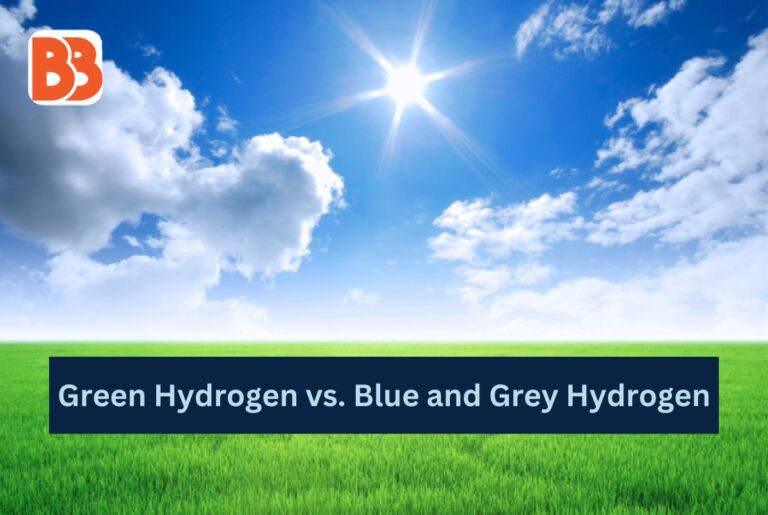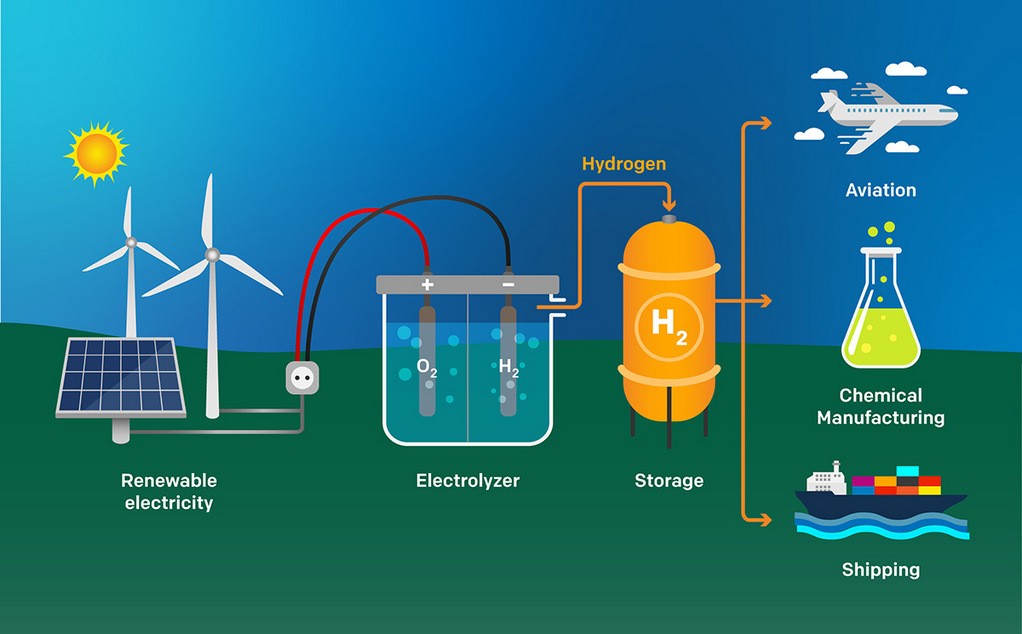As global efforts to transition to cleaner energy sources intensify, Green Hydrogen vs. Blue and Grey Hydrogenhas emerged as a promising solution for decarbonizing various sectors, including transportation, industry, and power generation. However, not all hydrogen is created equal, and it is produced using different methods, resulting in varying environmental impacts. The main types of hydrogen currently in discussion are green hydrogen, blue hydrogen, and grey hydrogen. Each differs in its production process, carbon footprint, and potential to contribute to a sustainable future. This article will break down these differences and explain why green hydrogen is viewed as the ultimate clean energy source.
What is Hydrogen and Why Does It Matter?
Hydrogen is the most abundant element in the universe, and when used as a fuel, it produces zero emissions at the point of use. This makes it attractive for decarbonizing sectors that are difficult to electrify, such as heavy industry and long-distance transportation. However, hydrogen’s sustainability depends on how it’s produced, which leads us to the classification into green, blue, and grey hydrogen.
Green Hydrogen
Green hydrogen is considered the gold standard of hydrogen production because it’s entirely clean. It is produced by electrolysis, a process that splits water (H₂O) into hydrogen (H₂) and oxygen (O₂) using electricity. When this electricity comes from renewable energy sources like wind, solar, or hydro, the entire process emits zero carbon emissions.
- Production method: Electrolysis powered by renewable energy.
- Carbon footprint: Zero emissions.
- Advantages: Completely sustainable, helps in the fight against climate change, supports energy independence, and aligns with global net-zero goals.
- Challenges: Currently more expensive to produce due to the high cost of renewable energy infrastructure and electrolyzer technology.
Green hydrogen is seen as the future of the hydrogen economy because it offers a way to decarbonize sectors like steel production and aviation, where electrification is challenging.
Blue Hydrogen

Blue hydrogen is produced from natural gas through a process known as steam methane reforming (SMR) or autothermal reforming (ATR). In this process, methane (CH₄) reacts with steam to produce hydrogen and carbon dioxide (CO₂). However, the key difference between blue and grey hydrogen (which we’ll discuss next) is that in blue hydrogen production. The CO₂ emissions are captured and stored through carbon capture and storage (CCS) technology. This significantly reduces the carbon footprint compared to grey hydrogen.
- Production method: Steam methane reforming or autothermal reforming, with carbon capture and storage.
- Carbon footprint: Lower emissions than grey hydrogen, but not zero. Some emissions escape during the process.
- Advantages: Less expensive than green hydrogen, a bridge technology for transitioning to a cleaner energy system, and utilizes existing natural gas infrastructure.
- Challenges: Not entirely carbon-free, and the efficiency of CCS technology is still under scrutiny. There’s also the risk of methane leaks during natural gas extraction and transport, which contributes to greenhouse gas emissions.
While blue hydrogen is seen as a transitional step toward green hydrogen, critics argue that it doesn’t fully eliminate emissions and relies on fossil fuels.
Grey Hydrogen
Grey hydrogen is the most common form of hydrogen production today and is also the most polluting. It’s produced from natural gas using steam methane reforming, but unlike blue hydrogen, the carbon dioxide emissions are not captured and are released directly into the atmosphere. This makes grey hydrogen a significant contributor to global CO₂ emissions.
- Production method: Steam methane reforming without carbon capture.
- Carbon footprint: High emissions, contributing significantly to global warming.
- Advantages: The cheapest form of hydrogen to produce.
- Challenges: Highly polluting, unsustainable in the long term, and doesn’t contribute to the fight against climate change.
Grey hydrogen is widely used in industries like oil refining and ammonia production, but as the world moves toward net-zero goals, its long-term viability is limited.
The Cost Factor: Why Green Hydrogen Isn’t Dominant Yet
One of the main reasons grey and blue hydrogen are more prevalent today is the cost. Grey hydrogen is the cheapest because it uses existing infrastructure and natural gas, which is relatively affordable. Blue hydrogen adds some cost due to the need for CCS technology but is still more affordable than green hydrogen. Green hydrogen is currently the most expensive due to the cost of renewable energy and electrolyzer technology. However, as the cost of renewables continues to drop and as economies of scale are achieved in green hydrogen production, prices are expected to fall. According to the International Energy Agency (IEA), green hydrogen could become cost-competitive with grey and blue hydrogen by 2030.
Why Green Hydrogen is the Future
Although blue hydrogen serves as a necessary bridge in the energy transition, green hydrogen is the ultimate goal for achieving a net-zero future. Governments and industries are investing heavily in green hydrogen production and infrastructure, driven by the need to cut emissions. And meet climate targets outlined in the Paris Agreement. You can read more about ” The Role of Green Hydrogen in Developing a Circular Economy“. Countries like Germany, Japan, and Australia are leading the way in green hydrogen projects, and major corporations are joining forces to scale up production.
Conclusion
We have concluded all about Green Hydrogen vs. Blue and Grey Hydrogen. In the battle for a sustainable future, green hydrogen stands out as the cleanest and most viable option in the long run. While blue hydrogen offers a transitional solution, its reliance on fossil fuels and imperfect CCS technology makes it less appealing for long-term decarbonization. Grey hydrogen, although cost-effective, is not sustainable and will eventually be phased out as we push toward greener alternatives. With continued advancements in technology and falling costs for renewable energy, green hydrogen could soon become the cornerstone of a decarbonized global economy. As we move toward 2050, the shift from grey to blue and ultimately green hydrogen will be crucial for reducing emissions and mitigating climate change.


